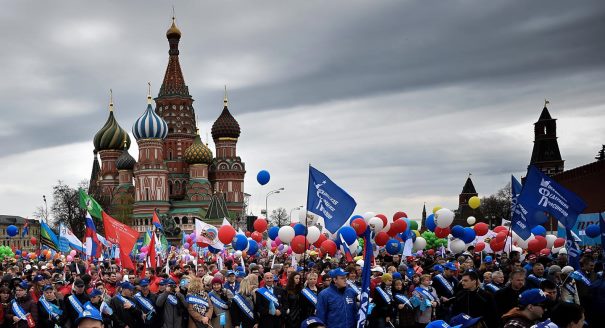Source: Secret firmy
This publication originally appeared in Russian in Secret Firmy.
Predictions about the future of the Russian economy have generally proved wrong. After the turn of the millennium, there were hopes that the enormous influx of oil money would finally turn Russia into a civilized country. Corruption would disappear, political competition would emerge, and private entrepreneurs would get the chance to shape new laws.
This didn’t happen. In fact, the country is now regressing to the level it was at in the late 1990s—and it risks remaining there for decades.
The Russian economy does have one hidden resource—small and medium-sized businesses. They currently account for less than 20 percent of the GDP, but could potentially comprise as much as 50 percent. But this resource remains untapped. On the contrary, the state’s role in the economy keeps growing.
To ruin the environment for business, the government doesn’t need to arrest businessmen or tax them excessively. Heavy regulation and preferential treatment of state-run enterprises do the job perfectly. Take a look at the banking sector. The state enables some banks to conceal their losses, undermining competition. It forces private banks to invest in infrastructure to comply with regulations and hands out money to large state-run banks, allowing them to lower the costs of their services and increase their market share.
This situation will definitely deteriorate, but it is unlikely to become catastrophic. The fusion between the state and big business will continue. The small and medium business sector will manage to survive as long as the market economy does. It will do so despite absorbing the high price of capital and paying exorbitant costs to defend its rights by measures that include avoiding taxes and recruiting criminals for protection.
A few little islands of private-sector activity in Russia—such as engineering—remain, where private companies are still working for Rosneft or Gazprom. But even this zone is quickly disappearing as certain well-known individuals tell private businessmen, “I get 75 percent, or you get no contract.”
Take a look at the United States, where the entire service sector consists of small and medium-sized businesses. They dominate the hotel and hospital sector, construction, architecture and engineering, and even supply the army. Of course, businesses of this size can’t build an airplane, but they can produce most of its parts.
Russia’s problem is that this sector is stuck on the level of retail stores, cafés, and beauty salons. Private schools or clinics, for instance, do not stand a chance in today’s Russia. They could be tremendously important drivers of economic development, training the future workforce or treating workers and raising productivity. But private schools are stifled by regulations, and good private medical facilities require enormous capital investment. The risks are just too high—and here I am talking from my own experience. After hearing that it would take eight years for a return on investment for a medical clinic project, a large investor told me, “There won’t even be a Russia in eight years.”
A few tweaks cannot turn around this situation. If we give out low-interest loans, as we are doing in the agricultural sector, what do we get in return? Company A got a high-interest loan, and Company B—a low-interest one, but it had to pay a bribe in order to get it, losing its advantage in the process.
Tax breaks are just as ineffective. They may save a business 5–10 percent of its tax burden, but that is nothing compared with the threat it faces from racketeers or law enforcement raids. And what’s the point of talking about tax breaks anyway, when 80 percent of Russia’s regions are on the verge of bankruptcy?
The example of Argentina is proof that the current system can endure almost indefinitely. Almost nothing has changed there in the last 100 years. Sometimes members of the opposition are shot, and sometimes they are invited to serve in parliament, but no major changes occur. Argentina has a hybrid economy with a very high share of state control. It makes enormous expenditures on social welfare, even though people’s standard of living is still quite low.
The Russian government can take a number of steps that will enable us to exist at the level of, say, the year 2000. But our lag from the rest of the developed world will keep growing. Russia is the eighth largest economy in the world, but we will become the 30th.
As our oil and gas will not keep us afloat for a hundred years, the state needs to find alternative sources of revenue. It can generate more money from the China–Europe transportation corridor than from gas. We have Siberia and can use it to bury waste. We can make a handsome profit on building new nuclear power stations. We can also hurt our competitors by, for example, destabilizing the Middle East and driving up oil prices.
This kind of thinking is a trap. We will break out of it if we face a catastrophe. If we suffer a complete economic blockade, the oil price plunges, and we crash to the same level as Ukraine, then change is inevitable.
Or else, if we have a change of elite and new politicians take over who are brave enough to attempt radical reforms. Well, miracles do happen. In 1986, on the eve of Deng Xiao Ping’s reforms, China was very stable—unlike the Soviet Union. So was South Korea, which had a lower GDP than its neighbor to the north before Roh Tae-woo embarked on his reforms. Everything is possible. But I am a pessimist and I believe that the most likely scenario for Russia’s future is stagnation for many years to come.
This publication originally appeared in Russian in Secret Firmy.







